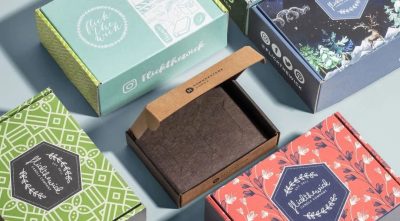Under the increasing trend of personalization and brandization, more and more enterprises are choosing customized packaging. Not only can they achieve unique product effects, but they can also integrate their corporate logos and brand philosophies into the packaging. However, as is well known, compared to large-scale production lines, customized packaging involves more complex processes and incurs higher costs than standard packaging.
Let’s discuss how to control costs in customized packaging, focusing on packaging costs. First, let’s look at the components that generally make up packaging costs.

### Factors Affecting Packaging Costs
Packaging costs are influenced by several factors. Here are some common ones:
01 **Material Type**
For packaging or printed products, material costs account for a significant portion of the total costs. This includes not only basic materials but also plate fees, printing material fees, and hot stamping foil fees.
Different materials have different costs; plastics are generally cheaper than paper. Glass, as a common packaging material, can be more expensive due to its weight and fragility. Additionally, sustainable packaging materials, such as biodegradable or compostable materials, may be more costly than traditional materials.
02 **Design Fee**
Custom-designed packaging is usually more expensive than standard, off-the-shelf packaging because it requires additional design work and production time. Factors that may affect customization costs include the complexity and detail level of the design.
If a third-party design company is chosen, design fees will be involved. There are different methods for calculating design fees, such as per-item and per batch calculations. Packaging boxes generally use the per-item method. However, excessive adjustments to the design layout may increase these fees, which are usually flexible and negotiated between both parties.
03 **Pre-press Costs**
Pre-press costs include image scanning, layout, proofing, and output. Scanning is priced per megabyte of image information, layout is charged based on the size of the layout, and proofing is charged per layout and color. Especially for proofing, each proof generates additional costs.
04 **Printing**
Printing brand or product information on packaging increases costs. Printing costs are influenced by the number of colors used, package size, and type of printing technology.
The range of these costs can vary widely. Different types and grades of printing equipment, as well as different printing factories or processes, have varying standards for printing fees. Color printing is generally charged per color unit, and when the overall print quantity is low, it may be calculated based on a startup fee.
05 **Post-press Processing Fees**
For packaging, design and production are just the initial steps. To give the product a more premium feel, post-press processes are essential. These processes are mainly calculated based on the number of pieces or area processed, such as varnishing, lamination, and hot stamping, which are generally calculated based on the processing area.
06 **Sustainability**
Sustainability is gradually becoming an important factor in packaging costs. Sustainable packaging materials, such as biodegradable or compostable materials, may be more expensive than traditional materials. However, sustainable packaging can also save costs in other areas, such as reducing transportation costs by lightening the weight.
### Strategies to Reduce Custom Packaging Costs
How can we reduce the costs of customized packaging? Consider the following points:
PART.1 **Reasonable Material Selection**
Choosing the right packaging material is the first and most important step in the design and development of customized packaging. Before customizing packaging, it is crucial to understand the product and the most suitable, cost-effective materials to save significant costs later on. Where possible, choose cost-effective paper over high-cost materials while ensuring product safety. Additionally, try to reduce the use of multiple types of packaging materials. The best scenario is for the same SKU or multiple SKUs to use the same type of packaging, which not only reduces risks but also allows for centralized purchasing and cost advantages.
PART.2 **Precise Structural Design**
Firstly, lightweight design can be adopted, including common methods such as weight reduction and thickness reduction.
Secondly, structural optimization can improve protection while reducing material usage through improved packaging structure.
Thirdly, new technologies and designs can reduce material usage to lower costs.
Fourthly, unnecessary components can be removed, such as labels, to reduce material usage and overall packaging costs.
PART.3 **Early and Frequent Communication**
In custom packaging, proofing fees can be significant. If design revisions lead to multiple proofs, the costs can reach tens of thousands of yuan. Therefore, maintaining smooth communication channels among the company, design firm, printer, and factory is crucial to reducing rework and proofing costs, as well as saving on invisible costs such as labor and time.
PART.4 **Process Selection**
The choice of process is also a significant factor affecting packaging costs. For example, processes like hot stamping and matte finishing can increase costs. Preliminary statistics show that applying hot stamping to a standard white cardboard box can increase packaging costs by 5%-15%.
Moreover, many brands are gradually eliminating lamination from paper boxes, not only to optimize costs but also to achieve plastic reduction goals.
Besides the above cost control measures for customized packaging, there are some often-overlooked “invisible” costs, such as labor costs. If a company chooses to design its packaging internally, the labor costs of designers must be considered, with longer design times leading to higher costs. Additionally, there are time costs; if issues arise during design or production leading to frequent rework and delays in product launch, the losses can sometimes be immeasurable. Therefore, to avoid high costs, different methods must be adopted for different types of expenses.
In a competitive business environment, reducing packaging costs is one of the key strategies to improve profitability and achieve sustainable development. However, cost reduction should not come at the expense of quality or effectiveness. Companies need to find an appropriate balance between cost and quality to seek the best possible customized packaging solutions to meet their needs and achieve their goals.


